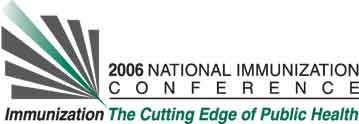Wayne Staggs1, David Ellsworth
2, and Charlene Graves
2. (1) Epidemiology Resource Center, Indiana State Department of Heath, Two North Meridian, Indianapolis, IN, USA, (2) Immunization Program, Indiana State Department of Health, Indianapolis, IN, USA
Learning Objectives for this Presentation:
By the end of the presentation participants will be able to:
1. Apply preventive measures to avoid measles outbreaks.
2. Apply control measures to limit disease spread.
Background:
On May 29, 2005 the Indiana State Department of Health received a report of a possible measles case in an unvaccinated 6 year old. The investigation documented transmission of disease primarily among individuals not vaccinated due to nonmedical objections. The index case was an Indiana resident infected in Romania two weeks earlier.
Objectives:
To describe methods of preventing and controlling measles in a mostly unvaccinated group.
Methods:
Persons with measles were defined as having generalized maculopapular rash, fever of >101ºF and at least one of the following: cough, coryza, or conjunctivitis. Measles cases were either laboratory-confirmed or met the clinical case definition and were linked epidemiologically to a patient with confirmed measles. Intensive control measures were implemented including: 1) voluntary isolation of patients, 2) tracing of exposed patient contacts, 3) administering vaccine and immunoglobulin to susceptible contacts, 4) voluntary home quarantine among those who refused vaccination, 5) checking immune status of health-care workers and urging physicians to report all suspected cases.
Results:
The investigation identified 34 total cases covering three generations, with rash onsets occurring between May 16 and June 24. Patients ranged in age from 9 months to 49 years; there were 28 patients (82%) between the ages of 4 and 18 who were not vaccinated. With the exception of one health care worker, transmission was limited to nine families who were infected during the first generation.
Conclusions:
This outbreak was limited by control measures but could have been prevented by adherence to long-standing ACIP recommendations calling for measles vaccination of 1) international travelers, 2) children, and 3) health-care workers.
See more of Posters
See more of The 40th National Immunization Conference (NIC)

